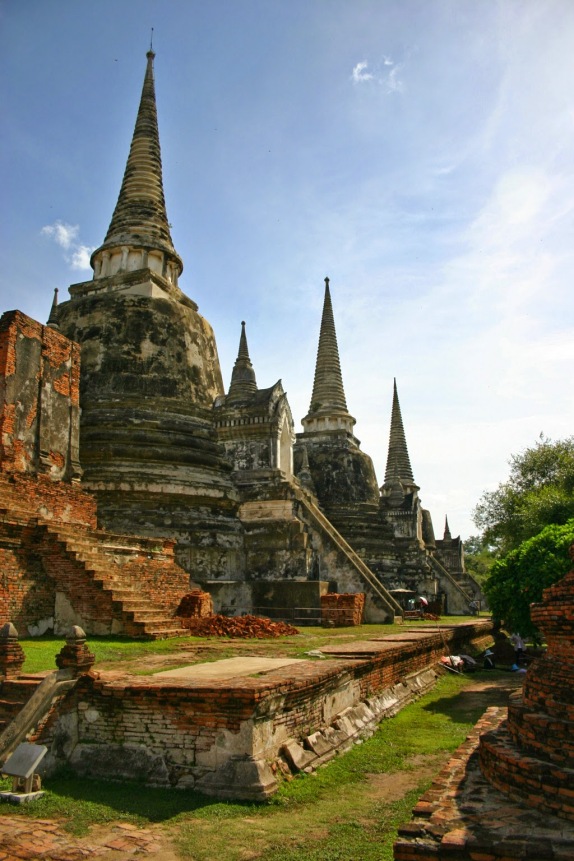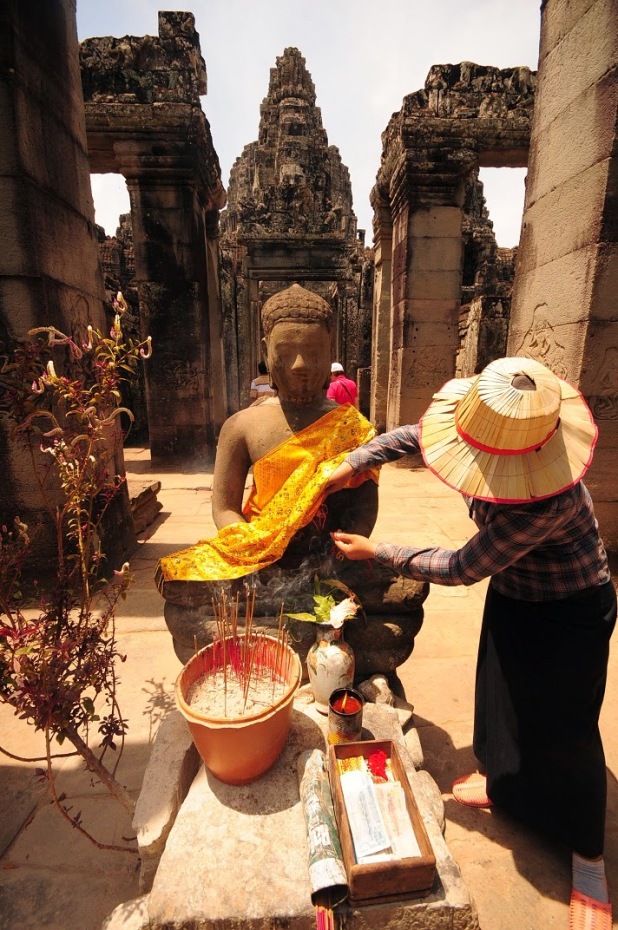Backpacking Through The Mekong Region
More than just an inexpensive way to travel, backpacking is an exhilarating and enriching way to truly experience a destination. It compels travelers to go beyond their comfort zones, deviate from the usual tourist route, live the way locals do, and make friends along the way.
Cebu Pacific Air, with its low fares and network, empowers travel enthusiasts to satiate their wanderlust and explore the best backpacking destinations of Southeast Asia. The airline offers multicity tickets that allow you to fly to one country and depart from another, maximizing your trip.
Bangkok, the backpackers’ hub
A backpacker favorite, Bangkok consistently lives up to its reputation as one of the most vibrant and exciting cities in the world. Eclectic in its offerings and highly accessible from other destinations, it is the usual starting point for many travelers who crisscross the region. Spending at least two nights here should be enough to explore the city’s lively street markets, spectacular temples, and the nightlife in the famed Khao San Road.
Sandy beaches and party nights at Thailand’s south
Koh Phi Phi, often referred to as Thailand’s most beautiful island, is located in Krabi province around 12 hours from Bangkok or a two-hour ferry ride from Phuket. The island shot to fame among adventure seekers when the film “The Beach” was shot there more than a decade ago. Accommodations start from as low as 50-100 baht a night. Another Southern Thailand hotspot among budget travelers is Krabi, a group of islands off the Andaman Coast. From Phi Phi, it takes about 1.5 hours by ferry. It is a town visited by those looking for nature activities such as rock climbing.
The cultural and laidback North Thailand
Complementing the vivacious energy of the South, the Northern part of Thailand offers a more laidback charm with its cultural attractions, relaxing vibe, and cooler weather. Just twp hours by bus from Bangkok is Ayutthaya, the ancient capital of Thailand and a stunning city filled with ancient temples and religious structures.
Three rivers—the Chao Phraya, the Lopburi and the Pa Sak Rivers—converge gere.
The most enjoyable way to get around the ancien ruins is by bicycle, although tul-tuks are also available to take visitors around the complex.
The largest and most culturally significant city in Northern Thailand, Chiang Mai can be reached directlt by train from Bangkok. Aside from its quiet and relaxing atmosphere that contrasts the shustle and bustle of the capital, a lot of people come here for jungle trekking, elephant encounters and adventuroys activities.
Scenic small-town life in Laos
Laos’ appeal lies in its vast wilderness and rich culture. This country used to be isolated after years of war, but is now gaining cult status among travelers from all over the world. Vientiane, the capital, is accessible from Bangkok by train or by bus from Chiang Mai. The city serves as the starting point to other destinations in Laos. Spending one night here should be enough to recharge one’s energy because of the relaxing small town atmosphere.
After doing a round of the temples, a great way toexperience this river town is to watch the sun set by the Mekong River.
this river town is to watch the sun set by the Mekong River.
 this river town is to watch the sun set by the Mekong River.
this river town is to watch the sun set by the Mekong River.
Meanwhile, Luang Prabang is a colorful hodgepodge of traditional Lao wooden houses and what remains of its French colonial past. Set underneath a temple-toppled hill, Luang Parabang is also known for its monks who line the streets to collect their only meal for the day.
A bit father away from Bangkok, it is a great take-off point for travelers who want to proceed to Hanoi in Vietnam.
Charming Cambodia
| Bayon Temple |
Cambodia no longer evokes images of just majestic ruins and lost empires. From unspoiled beaches to a distinctive cuisine, the old Khmer kingdom continues to unearth more attractions for tourists and nomads alike.
There are several borders in Thailand that provicde crossing to Cambodia, the busiest of which leads to Aranyaprathet/Poipet in Northwesten Cambodia.
Siem Reap provides access to the Angkor Archaeological Park, a 400 square kilometrer forested complex of the magnificent ruins of the ancient Khmer empire.
The major temples like the Angkow Wat and the Bayon Temple of Angkor Thom can be explored within one day, but to visit the other smaller and hidden ones will require a couple of days more.
Phnom Penh, the capital of Cambodia, can also be reached by bus from Siem Reap. The citym with its many museums, memorials, and pagodas, gives visitors a powerful glimpre of the country’s rich history and culture.
Other activities to try are river cruises, cooking classes, and checking out the street markets. From Phnom Penh, Ho CHi Minh in Vietnam can already be reached by bus.
There are many routes and ways to take when exporing these Southeast Asian gems, depending on the time each traveler has and how much they want to immerse themselves in every place they visit. The best way to make the most of every trip is to plan ahead and plan well.
Aside from booking flights early, securing the necessary travel permits or visas (if required) and packing efficiently, exciting things happen when one travels with an open mind.




















If you come to Vietnam but don't go to Sapa, it will unfortunate.
ReplyDelete